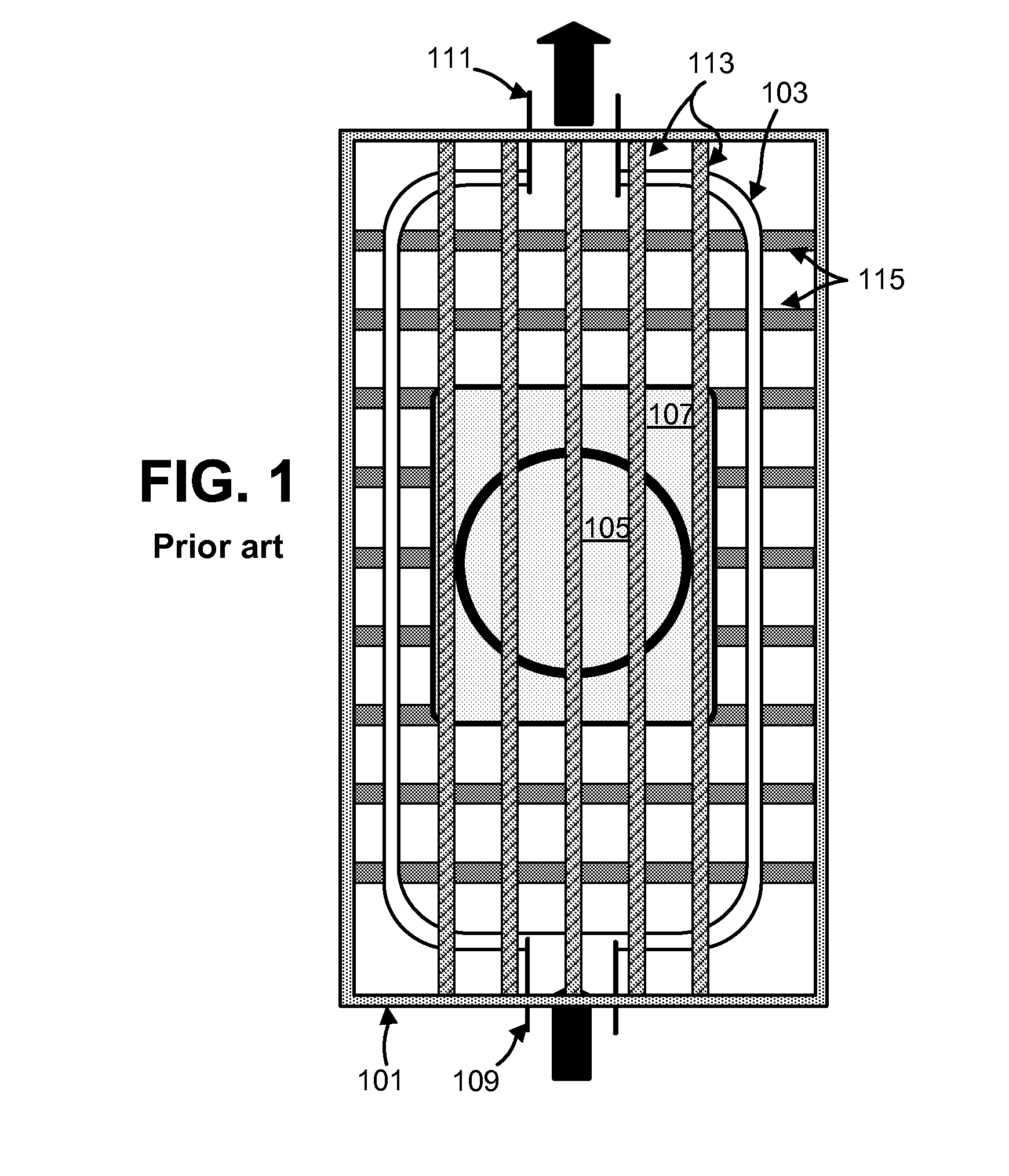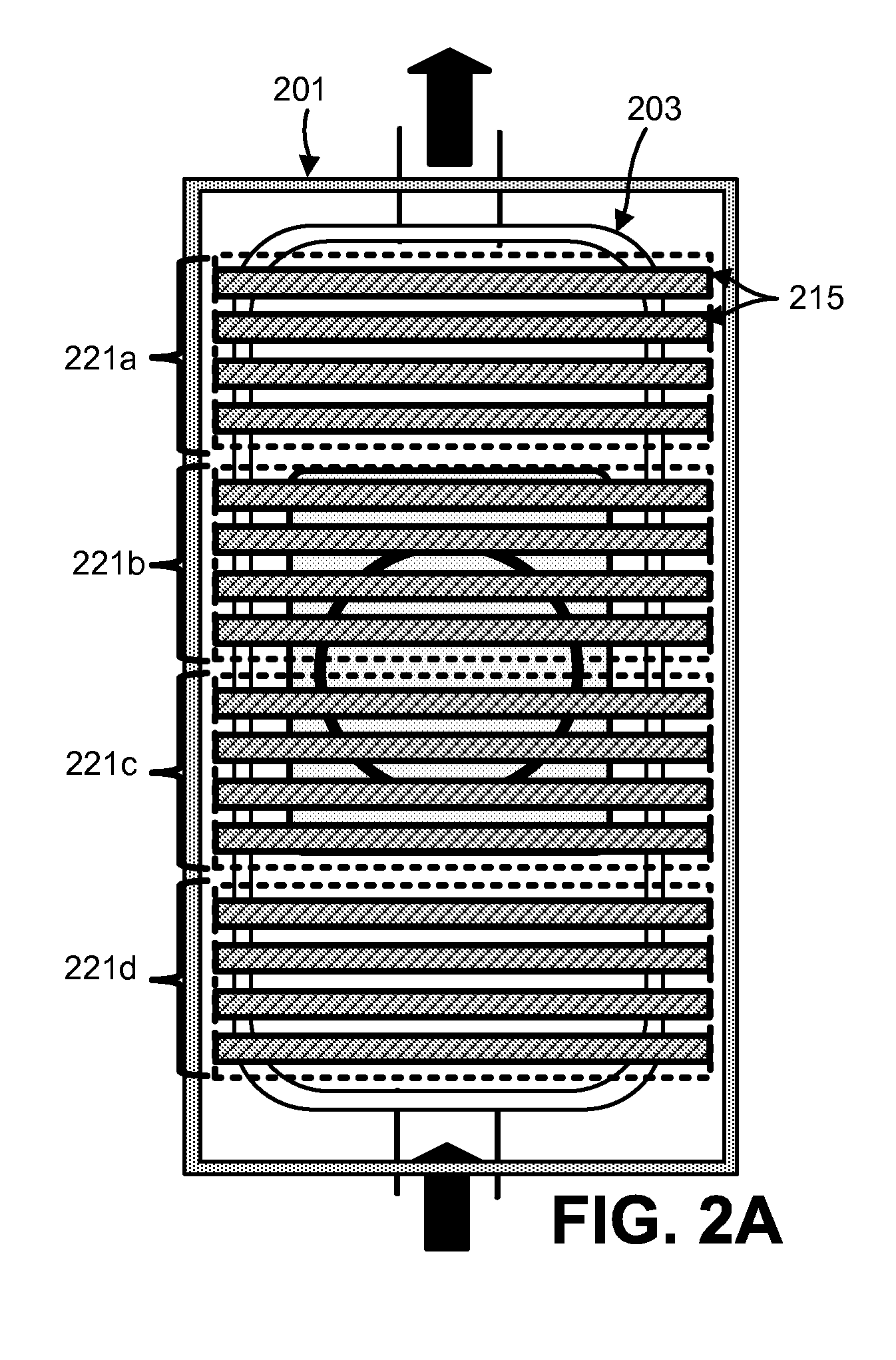Modular and readily configurable reactor enclosures and associated function modules
a reactor enclosure and modular technology, applied in the field of material processing systems, can solve the problems of difficult if not impossible use of external measuring instruments in connection with cold wall cvd reactor chambers heated using, and it is not desirable to perform such monitoring by instruments, so as to facilitate access to the upper surface, improve the operation of the reactor and the process, and accurately control the process. effect of the process
- Summary
- Abstract
- Description
- Claims
- Application Information
AI Technical Summary
Benefits of technology
Problems solved by technology
Method used
Image
Examples
Embodiment Construction
[0039]Preferred embodiments of modular, reconfigurable reactor enclosures of this invention are now described. However, prior to doing so, a brief description of a conventional, prior art, reactor enclosure is provided.
[0040]FIG. 1 (prior art) illustrates a schematic plan view of relevant aspects of a conventional, prior art reactor enclosure, which being presented for purposes of explanation, is not necessarily a technically accurate representation of any particular prior art reactor enclosure nor of any particular prior art reactor chamber. Reactor enclosure or housing 101 supports and retains CVD reactor chamber 103 which is commonly of transparent quartz and which includes within such common components as susceptor 105, for holding semiconductor wafers (epilayers), and susceptor control plate 107, for improving temperature stability of the susceptor. Process gases enter reactor chamber 103 through inlet or inlets 109 structured to produce desired patterns of gas flow. The gases ...
PUM
| Property | Measurement | Unit |
|---|---|---|
| temperatures | aaaaa | aaaaa |
| dimension | aaaaa | aaaaa |
| heat | aaaaa | aaaaa |
Abstract
Description
Claims
Application Information
 Login to View More
Login to View More - R&D
- Intellectual Property
- Life Sciences
- Materials
- Tech Scout
- Unparalleled Data Quality
- Higher Quality Content
- 60% Fewer Hallucinations
Browse by: Latest US Patents, China's latest patents, Technical Efficacy Thesaurus, Application Domain, Technology Topic, Popular Technical Reports.
© 2025 PatSnap. All rights reserved.Legal|Privacy policy|Modern Slavery Act Transparency Statement|Sitemap|About US| Contact US: help@patsnap.com



